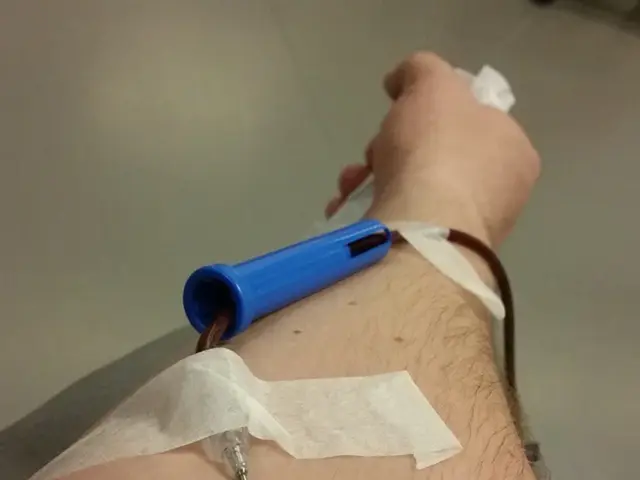Reviving Lives: Emergency Responders Estimated to Save up to 10,000 Lives Annually
In Germany, a pressing concern is the low survival rate of people suffering from cardiac arrest outside of hospitals. Currently, only about eleven percent of these individuals survive, a statistic that highlights the urgent need for change.
A recent study conducted by the ADAC Foundation in Munich suggests that up to 10,000 lives could be saved annually if bystanders provided immediate first aid during cardiac arrest. This is where the concept of a 'culture of resuscitation' comes into play - a societal understanding that one should help immediately in an emergency.
At present, CPR training is only mandatory in two federal states, Hesse and Saarland. However, the study proposes introducing mandatory CPR training in schools, providing incentives for adult training, and making telephone CPR legally mandatory by emergency services. The goal is to increase the number of people equipped with the necessary skills to save lives.
The study also points out the importance of first responder apps, which alert qualified first responders in the vicinity in case of an emergency. Unfortunately, these apps only cover half of Germany, and their funding and technical standards are inconsistent. To address this issue, the study suggests a national registry for defibrillators, ensuring their locations are centrally recorded and distributed as needed.
Defibrillators are currently distributed unsystematically, and many people feel insecure when using them. Three-quarters of the population, for instance, do not have up-to-date CPR knowledge, and 75% feel insecure when using a defibrillator. To combat this, the study suggests targeted support for volunteering in first responder structures and providing accessible training programs for the general public.
The risk of irreversible brain damage increases rapidly after four minutes without CPR. On average, emergency services take seven minutes to arrive, and even longer in rural areas, in addition to the time for the emergency call. Every second counts in such situations, and equipping more people with the knowledge and resources to provide immediate first aid could significantly improve survival rates.
Encouragingly, every ninth layperson has already performed CPR at least once in their lives. However, many people currently do not feel confident enough to perform CPR and provide breaths if someone collapses next to them. The study indicates that this lack of confidence could be alleviated through more widespread training and education.
In a positive step towards this goal, the only German federal state that has officially introduced mandatory CPR training for laypeople in schools starting in the 2026/27 school year is North Rhine-Westphalia (NRW). This move is a significant stride towards fostering a 'culture of resuscitation' and ensuring that more lives are saved each year.
In conclusion, the study's recommendations, if implemented, could lead to a significant decrease in cardiac arrest-related deaths in Germany. By promoting a culture of resuscitation, providing accessible training, and improving the infrastructure for first responders, Germany could take a significant step towards saving more lives.
Read also:
- Increased measles cases Approaching 1,500 in the United States, with a new case detected in the Chicago metropolitan area.
- An Ear Infection Explained: A Discussion on Otitis Media
- Recommendations by CDC advisers for limiting MMRV vaccine choices in younger children, and forthcoming decision on hepatitis B vaccine restrictions.
- October 16th - Volunteer Workforce Training





